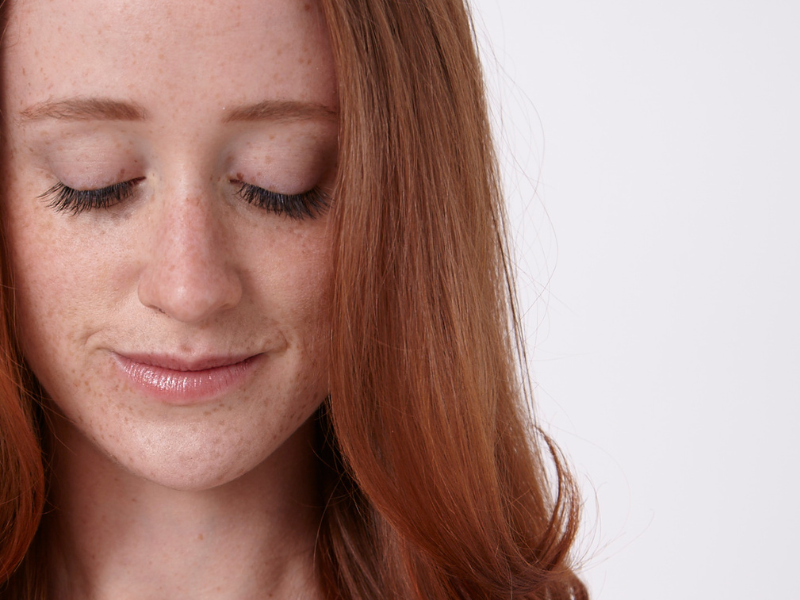You know those little dark pores you see on your nose? The ones that look like blackheads, but always come back? Those might not be blackheads and you might be treating them the wrong way. Here’s everything you need to know about those dark pores, how to treat them and keep them from coming back:
What are blackheads?
Blackheads occur when dead skin cells, dirt, and other build-up clogs a pore or hair follicle. You can recognize them because they are dark in color and usually raised. They often do not hurt to the touch like a pimple or whitehead might. Blackheads are actually a mild form of acne. They commonly appear on the face, especially in the T-zone (forehead, nose, and chin), but can also occur on the chest, back, and shoulders. Regular cleansing and exfoliation can help prevent and manage blackheads, and various skincare products are available to address them. If you’re concerned about persistent blackheads, consulting a dermatologist is advisable.
What are sebaceous filaments?
Inside your pores and hair follicles is something called a sebaceous gland. Sebaceous filaments are structures that help carry sebum (skin oil) to the surface of the skin. They often resemble tiny, pin-like dots on the nose, chin, and other areas of the face. Unlike blackheads, sebaceous filaments are a normal part of the skin’s anatomy and shouldn’t be confused with acne. While they may appear darker when sebum accumulates, they are generally lighter in color and have a softer texture compared to blackheads. Regular skincare practices like gentle cleansing and exfoliation can help manage their appearance.
What is the difference between blackheads and sebaceous filaments?
Blackheads and sebaceous filaments are often confused, but they have distinct characteristics. Blackheads are a type of acne caused by clogged hair follicles, appearing as small, dark bumps on the skin’s surface. In contrast, sebaceous filaments are normal structures that help transport sebum and are generally lighter in color, appearing as tiny, pin-like dots on the nose, chin, and face.
While blackheads can be more noticeable and may require treatment, sebaceous filaments are a natural part of the skin and don’t typically lead to skin issues. Proper skincare, including regular cleansing and exfoliation, can help manage both concerns.
How to treat blackheads:
Because blackheads are a clogged pore they are a type of blemish. Blackheads can be removed by washing the skin, exfoliating, using a pore strip, or getting a facial extraction. Squeezing or picking at blackheads may cause scarring and skin damage. The risk of blackheads can be reduced by regularly washing and exfoliating, always removing your makeup and SPF, and doing regular face masks.
To treat blackheads, consider these tips:
1. Gentle Cleansing: Use a mild, non-abrasive cleanser to clean your face twice a day to remove excess oil and dead skin cells.
2. Exfoliation: Regular exfoliation helps to unclog pores. Use a gentle exfoliating product containing salicylic acid or glycolic acid.
3. Topical Retinoids: Retinoids like tretinoin can help prevent and treat blackheads by promoting cell turnover and preventing the clogging of pores.
4. Clay Masks: Applying a clay mask once a week can help absorb excess oil and impurities from the skin.
5. Non-comedogenic Products: Choose skincare and makeup products labeled as non-comedogenic to avoid further clogging of pores.
6. Hydration: Keep your skin well-hydrated, as dehydration can stimulate the production of more oil.
7. Avoid Picking: Resist the urge to pick or squeeze blackheads, as this can worsen inflammation and lead to scarring.
How to treat sebaceous filaments
Sebacuous filaments are naturally occurring and are not a form of a blemish, although their appearance may be unsightly. The best way to minimize sebaceous filaments is by oil cleansing. Doing regular oil cleansing will help to reduce the appearance without stripping your face of the oils it needs to stay hydrated. Double cleansing, once with an oil-based cleanser and once with a water-based cleanser is a great method redheads can use.
Managing sebaceous filaments involves a different approach than treating blackheads. Here are some tips:
1. Gentle Cleansing: Use a mild cleanser to wash your face regularly to remove excess oil and prevent the buildup of sebum.
2. Non-comedogenic Products: Opt for skincare and makeup products labeled as non-comedogenic to avoid clogging pores.
3. Exfoliation: Gentle exfoliation with products containing salicylic acid or alpha hydroxy acids can help keep pores clear.
4. Oil Cleansing: Consider using oil-based cleansers, like those with jojoba or mineral oil, to help dissolve and remove sebum without over-drying the skin.
5. Clay Masks: Occasional use of clay masks can help absorb excess oil and reduce the appearance of sebaceous filaments.
6. Hydration: Ensure your skin stays hydrated, as proper hydration can help regulate oil production.
Remember, sebaceous filaments are a natural part of the skin and don’t necessarily require treatment. However, incorporating these tips into your skincare routine can help manage their appearance. If you have concerns, consult a dermatologist for personalized advice.
Rock it like a Redhead!
RELATED POSTS
READ: Redheads Can Get Rid Of Pesky Blackheads With These Expert Tips



